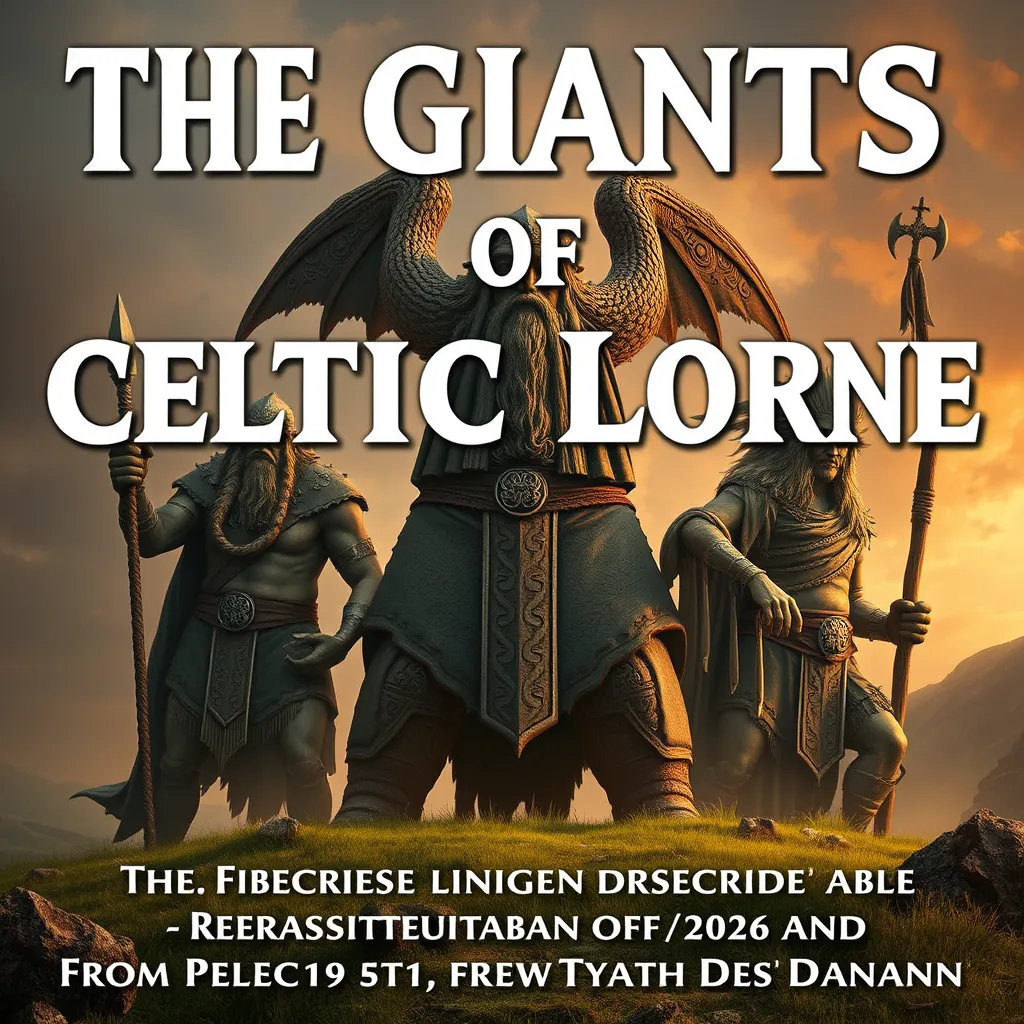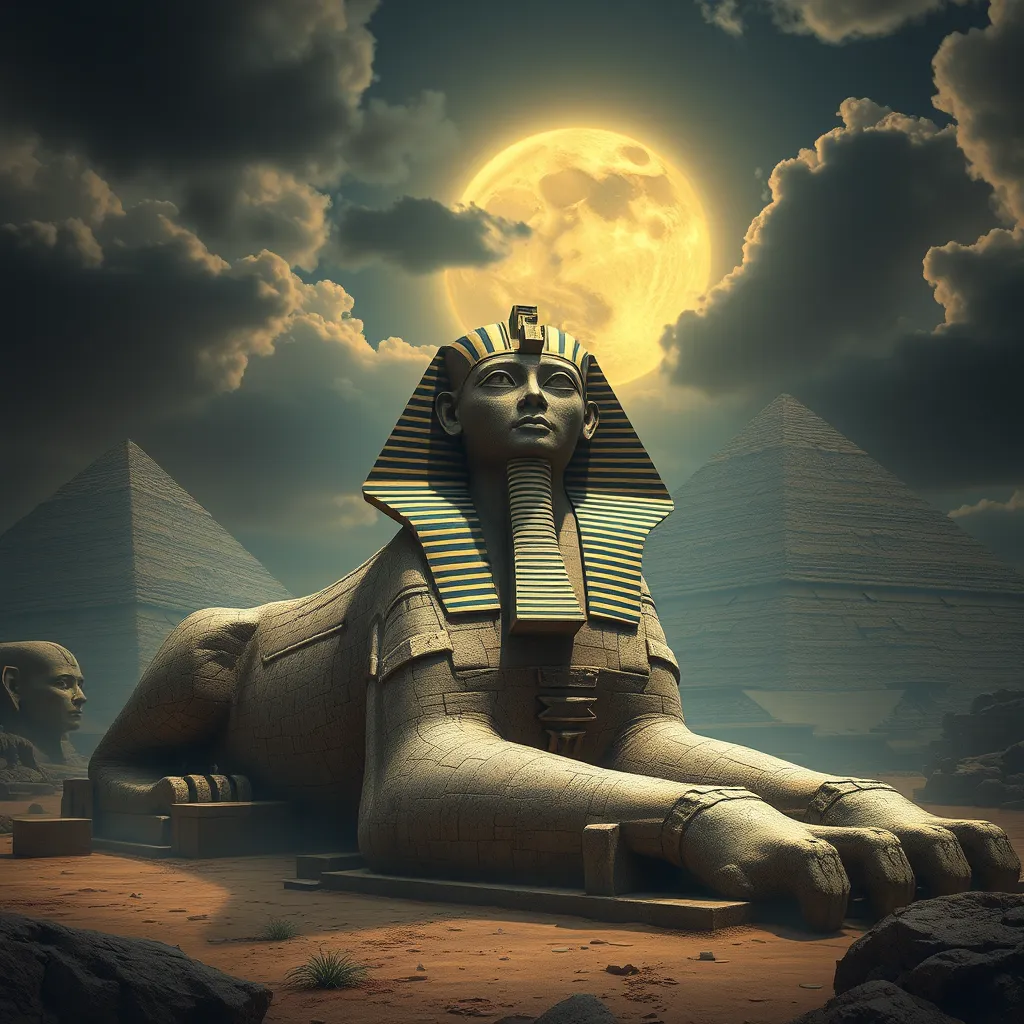The Giants of Celtic Lore: From Fearsome Fomorians to Mighty Tuatha Dé Danann
I. Introduction to Celtic Mythology
Celtic mythology is a rich tapestry of stories and beliefs that originated from the Celtic peoples of Europe, particularly in areas that are now Ireland, Scotland, Wales, and Brittany. This mythology is characterized by its deep connection to nature, reverence for the supernatural, and an intricate pantheon of deities and legendary figures. Among these figures, giants hold a significant place, symbolizing both chaos and order, strength and vulnerability.
The role of giants in Celtic folklore is multifaceted; they are often depicted as powerful beings that embody the elemental forces of the world. Their stories are intertwined with themes of conflict, creation, and the struggle between good and evil, making them essential figures in the Celtic mythological landscape.
II. The Fomorians: Fearsome Beings of Chaos
The Fomorians are among the earliest and most enigmatic figures in Celtic mythology. Traditionally described as monstrous beings with grotesque features, they are often associated with chaos and darkness. Their origins are shrouded in mystery, with some texts suggesting they are ancient deities of the earth and the sea, representing the primal forces of nature.
Key characteristics of the Fomorians include:
- Physical deformity, often depicted with one eye, one arm, or other monstrous traits.
- A chaotic and malevolent disposition, often in opposition to the more orderly Tuatha Dé Danann.
- Association with storms, droughts, and calamities, emphasizing their role as harbingers of chaos.
Several myths highlight the Fomorians as antagonists. One of the most notable stories involves their battles against the Tuatha Dé Danann, where they are depicted as invaders of Ireland, seeking dominance over the land and its people. Their conflict with the Tuatha Dé Danann is a central theme in various texts, showcasing their role as formidable adversaries.
III. The Tuatha Dé Danann: The Divine Folk
The Tuatha Dé Danann, often translated as the “People of the Goddess Danu,” are revered as the divine race in Celtic mythology. According to legend, they arrived in Ireland from the distant land of Tír na nÓg, bringing with them advanced knowledge, skills, and magical powers. They are considered the deities and heroes of Irish folklore, embodying the ideals of civilization and culture.
The Tuatha Dé Danann are characterized by their:
- Mastery of the arts, including music, poetry, and craftsmanship.
- Ability to perform magic, such as shape-shifting and controlling the elements.
- Connection to the natural world, often associated with specific landscapes and sacred sites.
Their name and lineage signify a deep-rooted connection to the earth and the mystical elements of Irish culture. The stories of the Tuatha Dé Danann celebrate heroism, wisdom, and the pursuit of justice, contrasting sharply with the chaotic nature of the Fomorians.
IV. The Conflict Between the Fomorians and Tuatha Dé Danann
The conflict between the Fomorians and the Tuatha Dé Danann is a prominent theme in Celtic mythology, representing the eternal struggle between chaos and order. Key battles, such as the First Battle of Mag Tuired, highlight the intense rivalry and the stakes involved in their confrontations.
Notable figures in these battles include:
- Lugh: A champion of the Tuatha Dé Danann known for his skill and leadership.
- Balor: A fearsome Fomorian king with a deadly gaze, symbolizing destruction and chaos.
- Nuada: The king of the Tuatha Dé Danann, representing the ideals of leadership and sacrifice.
The outcomes of these conflicts had lasting impacts on Celtic mythology, shaping the narratives surrounding the land of Ireland and its people. The victories of the Tuatha Dé Danann over the Fomorians symbolize the triumph of order over chaos, a theme that resonates deeply within Celtic cultural identity.
V. Symbolism and Themes in the Stories
The giants of Celtic mythology embody profound symbolic meanings. The Fomorians represent chaos, the primal forces of nature that can disrupt the harmony of life. In contrast, the Tuatha Dé Danann symbolize order, culture, and the aspiration towards civilization.
Key themes found in these stories include:
- Chaos vs. Order: The ongoing struggle between the Fomorians and Tuatha Dé Danann illustrates the balance required in nature and society.
- Heroism: The tales often highlight the bravery of individuals who rise against chaos, embodying the spirit of resistance.
- Transformation: Many stories feature characters undergoing significant changes, reflecting the fluidity of existence and the potential for rebirth.
The cultural significance of giants in Celtic society can be seen in their representation of the human condition, the challenges faced in life, and the moral lessons derived from conflicts and resolutions.
VI. The Legacy of Celtic Giants in Modern Culture
The influence of the Fomorians and the Tuatha Dé Danann extends beyond ancient texts, permeating contemporary literature, film, and art. Their narratives have inspired countless adaptations and reinterpretations, showcasing the enduring fascination with these figures.
Examples of their influence in modern culture include:
- Literature: Modern fantasy novels often draw on the archetypes of the Fomorians and Tuatha Dé Danann, using them as templates for characters and conflicts.
- Film: Movies inspired by Celtic mythology frequently feature giants, incorporating their stories into larger narratives of heroism and adventure.
- Video Games: Popular games often include characters and storylines based on these mythological giants, engaging audiences with interactive storytelling.
When compared to giants from other mythologies, the Fomorians and Tuatha Dé Danann maintain unique attributes while sharing common themes with giants from Norse and Greek traditions, such as the struggle between divine beings and monstrous forces.
VII. Comparative Analysis with Other Mythological Giants
Giants exist as universal archetypes across various mythologies, each culture interpreting them through its lens. In Norse mythology, giants often represent chaos and destruction, similar to the role of the Fomorians. In contrast, Greek mythology features giants such as the Titans, who embody both chaos and the potential for order, reflecting the duality seen in Celtic giants.
Some similarities and differences include:
- Nature of Conflict: In Celtic myths, the conflict often revolves around land and civilization, while in Norse tales, it may involve the cosmic order.
- Characterization: Celtic giants like the Fomorians are typically depicted as malevolent, whereas some Greek giants exhibit a blend of good and evil traits.
- Resolution: The resolution of conflicts in Celtic myths often leads to a restoration of balance, akin to the themes found in other traditions.
These comparative analyses highlight the role of giants in shaping cultural narratives, revealing universal themes of struggle, transformation, and morality.
VIII. Conclusion: The Enduring Fascination with Celtic Giants
The Fomorians and Tuatha Dé Danann hold a significant place in the tapestry of Celtic mythology, embodying themes of chaos and order, conflict and resolution. Their stories reflect the complexities of human experience and the cultural identity of the Celtic people.
As we explore the impact of these myths on Celtic identity, it becomes clear that the fascination with giants continues to resonate today, influencing modern storytelling and culture. Their tales serve as a reminder of the eternal struggle between opposing forces, a narrative that remains relevant in our understanding of the world.
In conclusion, the giants of Celtic lore, through their trials and tribulations, offer timeless lessons and reflections on the human condition, ensuring their place in both ancient and modern narratives.



